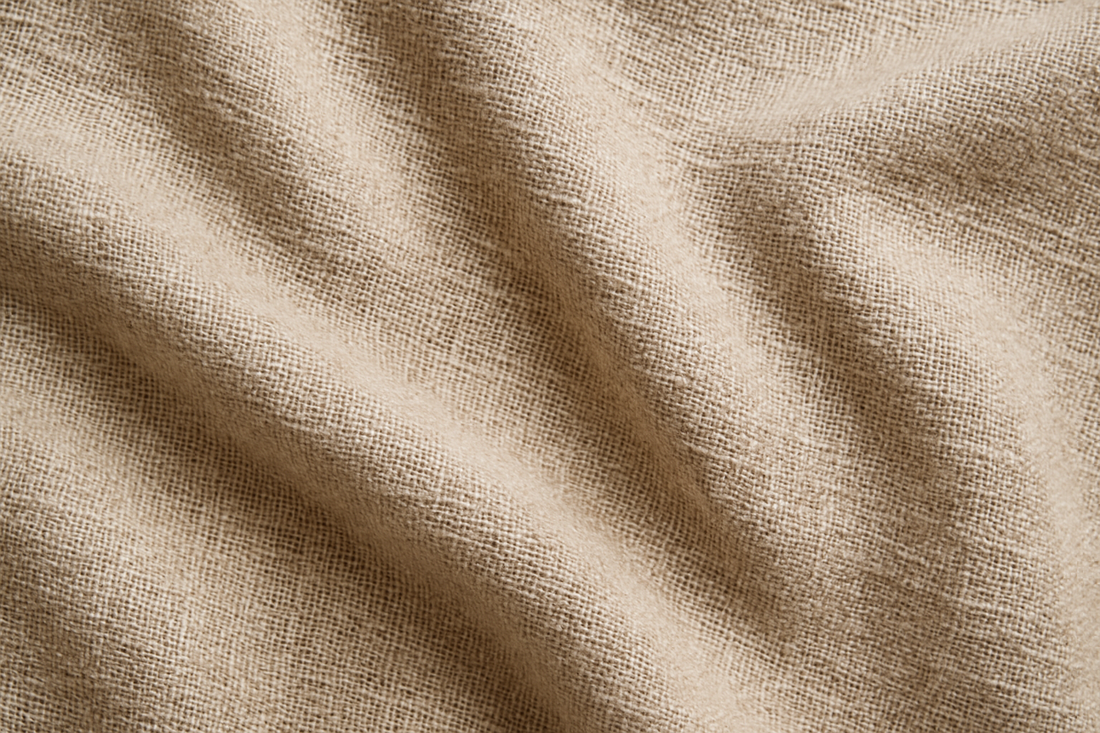
Linen Fabric: the breezy summer workhorse (and how not to ruin it)
Linen fabric has big “open-the-window” energy—cool on skin, crisp to the eye, easy to love.
If you design, sew, or just want your linen to last longer than one hot weekend, this guide is for you. Plain talk, zero fluff, lots of do-this-not-that.
(Planning a line and need help with patterns or production? Our team can help in Vancouver—peek at the garment production page.)
Why linen fabric wins summer
It breathes. Flax fibers are long and great at moving moisture off skin.
It dries fast, so sweat doesn’t linger.
It barely clings—low static means the cloth floats and air moves.
Sensitive skin? Linen is naturally hypoallergenic and gets softer with wear.
A quick tour of the yarn (and how to keep it from snapping)
Linen is a bast fiber: strong, with low stretch. That gives you two truths.
First, its tensile strength is high (even higher when wet). Second, elasticity is low—so it creases and, under too much tension, yarns can pop.
Keep yarns happy by running moderate tension, keeping the workroom at 60–70% humidity, using smooth thread paths and cone nets, and sewing with fresh sharp needles plus a slightly longer stitch (about 2.8–3.2 mm).
Making with linen: smart choices before you cut
Start by pre-washing the fabric—every time. Linen relaxes in water and almost always shrinks 2–5% (looser weaves can shrink more), so let it do that before you draft or cut.
After washing, treat every raw edge as if it wants to escape: linen frays, so finish seams with an overlock/serge, or go cleaner with French or flat-felled seams.
When you press, think steam first, heat second. Linen loves moisture, but it can go shiny under a hot soleplate, so use a press cloth and lift-and-press rather than drag.
For structure at collars and plackets, keep interfacing light and woven, and test your fuse temperature on a scrap so it bonds without bubbling.
Finally, draft with honest ease. Linen drapes beautifully but barely stretches; it will not forgive negative ease, no matter how optimistic the designer.
“Why is linen fabric expensive?”
Short answer: the plant is picky and the process is fussy. Growing flax, retting, scutching, hackling, and spinning take time; yields are lower than cotton.
Long-fiber, wet-spun yarns (smoother, stronger) cost more than short, dry-spun yarns. Weaving is slower; finishing takes care to keep the hand crisp, not cardboard. The upside: great linen lasts.
Cost spreads over years of wear, not months.
Spotting good linen vs just-okay linen
Good linen feels calm in the hand—smooth-ish, consistent, with character not chaos. Look for:
- Long, even fibers (fewer harsh slubs, cleaner surface)
- Balanced yarn count and density (crisp drape that softens nicely)
- Thoughtful finishing (enzyme or steam finishing = instant comfort)
- Even dye uptake with minimal streaking
- Certifications like OEKO-TEX for cleaner processing
If it feels papery and scratchy out of the bag, it likely comes from shorter fibers or rough finishing.
Sewing linen without the drama
Use sharp/Microtex 80/12–90/14 needles for light–mid weights (100/16 for heavy). Pick polyester or cotton-wrapped poly thread for strength (100% cotton if you want a softer vintage vibe).
Keep stitch length around 2.8–3.2 mm to avoid perforation and puckering. Choose French or flat-felled seams for longevity and reinforce shoulders and vents.
Finish hems with a narrow double-turn or bias binding to tame fray.
Care, wrinkles, and “does linen shrink?”
Shrinkage? Yes—usually 2–5% on the first wash. Pre-wash fabric or buy pre-shrunk garments.
Wash inside out on cold to warm gentle with mild detergent; skip bleach. Line-dry, pulling pieces while still slightly damp to reduce wrinkles; tumble on low only if needed and remove early.
For wrinkle control, iron while damp on the linen setting with steam and a press cloth. A light spray starch or sizing gives a crisper finish.
Traveling? Mist with water, smooth by hand, and hang for 20 minutes—creases drop fast. Hang shirts and dresses; fold heavy pieces; keep out of direct sun to avoid fade lines.
Common mistakes (so you don’t make them)
Over-fusing collars and cuffs (hello, shiny scorch).
Skipping edge finishes (the seams unravel after two washes).
Tiny stitches plus dull needles (thread breaks and seam puckers).
No pre-shrink (your medium becomes a small overnight).
Buy or build? A tiny checklist
Choose long-fiber, even-weave linen for dressy looks; rustic slub for casual. Confirm pre-wash and measurement tolerances with your factory.
Match needle, thread, and stitch to fabric weight.
Add clear care labels—QR to a how-to page helps. Ready to scale or need a local partner? See our garment production in Vancouver.
The short of it
Linen fabric breathes, wicks, and ages beautifully.
Treat the yarn kindly, stabilize your seams, pre-shrink before you sew, and teach proper care.
Do that, and linen pays you back with summer comfort and a long, graceful life.
